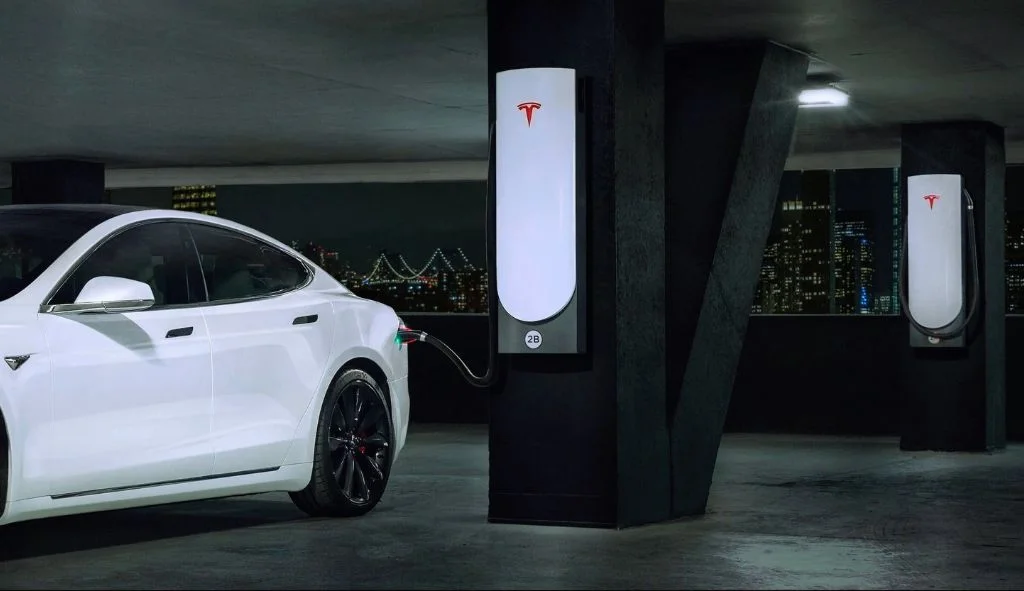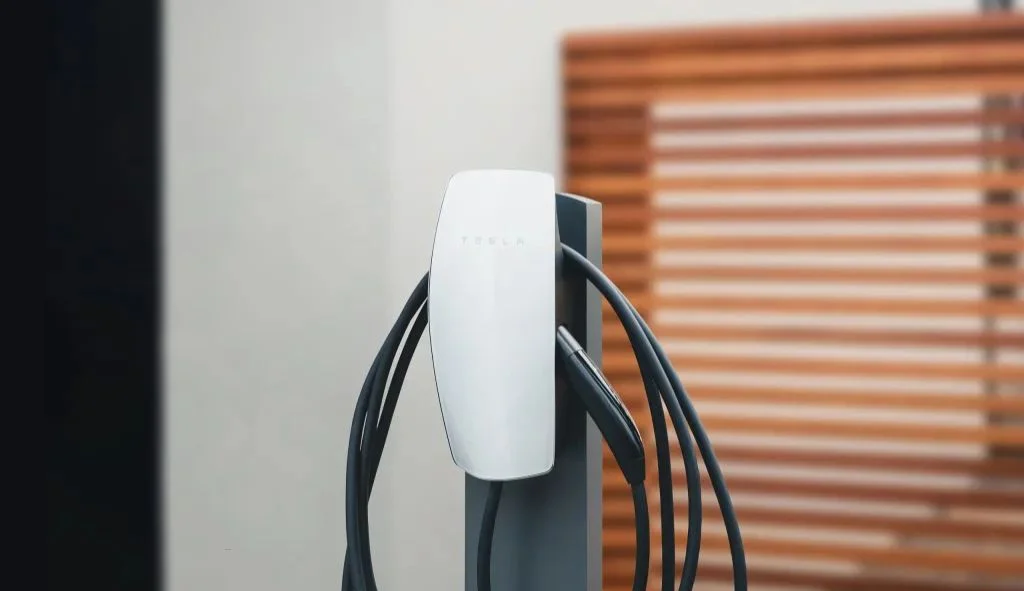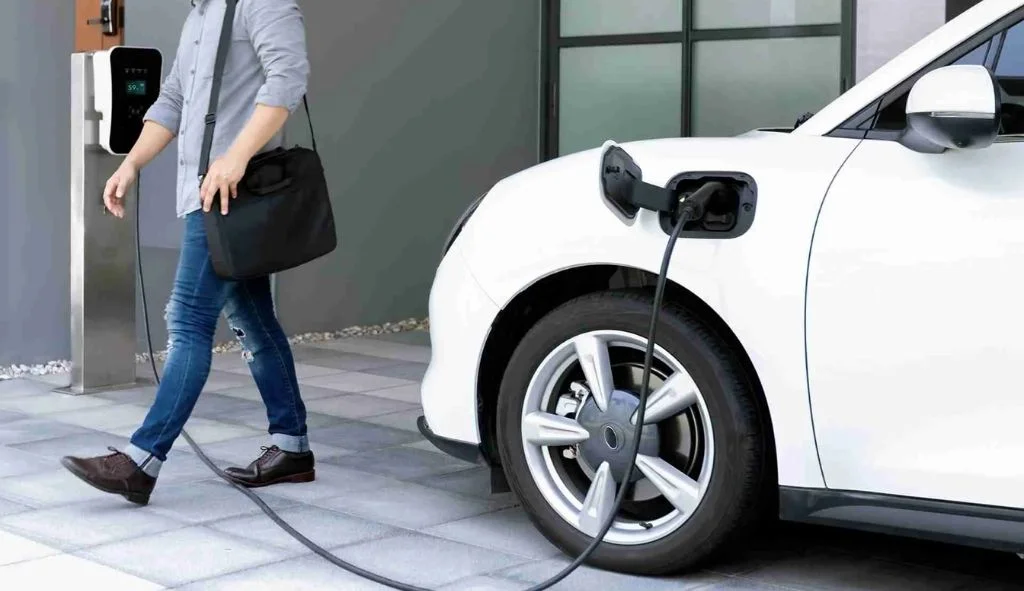Tesla destination chargers are Level 2 charging stations installed at hotels, restaurants, and other locations where Tesla owners spend time, adding up to 44 miles of range per hour.
Understanding Tesla Destination Charging
Tesla has built an extensive network of charging options for its electric vehicle owners. The company’s charging infrastructure includes Superchargers for rapid charging on long trips and destination chargers for convenient charging while owners are parked for longer periods. These charging options help address range anxiety, which remains a concern for many potential electric vehicle buyers.
Definition and Purpose
Tesla destination chargers are Wall Connectors installed at public locations such as hotels, restaurants, shopping centers, and parking garages. They function similarly to the Wall Connectors that Tesla owners can install in their homes but are placed strategically at destinations where Tesla drivers are likely to stay for several hours or overnight.
With over 40,000 Wall Connectors at destination charging locations globally, Tesla has created a network that allows owners to charge their vehicles while engaged in other activities.
The main purpose of destination chargers is to provide convenient charging options when Tesla owners are away from home but will be parked for an extended period. Unlike Superchargers, which are designed for quick charging during long-distance travel, destination chargers offer a more relaxed charging experience that fits into your normal activities.
You can plug in when you arrive at a hotel for the night, a restaurant for dinner, or a shopping mall for a few hours of retail therapy, and return to a vehicle with increased range.
How They Differ from Superchargers?
Tesla destination chargers are fundamentally different from Superchargers in terms of charging speed, location strategy, and intended use. Destination chargers are Level 2 AC chargers that provide a maximum power output of 11.5 kW (48 amps), which adds range at a moderate pace. In contrast, Superchargers are DC fast chargers capable of delivering up to 250 kW, enabling them to add up to 200 miles of range in just 15 minutes.
The location strategy also differs significantly. Superchargers are typically placed along major highways and travel corridors to facilitate long-distance travel, while destination chargers are installed at locations where people tend to spend time. This complementary approach ensures Tesla owners have charging options regardless of their travel patterns.
Another key difference is the charging experience. Supercharging sessions are meant to be brief, typically lasting 15-30 minutes-just enough time for a quick break during a road trip. Destination charging, on the other hand, is designed to integrate seamlessly with activities that naturally involve longer parking periods, such as overnight hotel stays, dining at restaurants, or shopping.
How Tesla Destination Chargers Work?
Tesla destination chargers operate using the same technology as the Wall Connectors available for home installation. They convert AC power from the electrical grid into DC power that can charge the vehicle’s battery.
Charging Speed and Capabilities
The charging speed of Tesla destination chargers varies depending on several factors, including the model of your Tesla, the specific installation, and external conditions. At maximum capacity, these chargers can add up to 44 miles of range per hour for Model 3 and Model Y, 41 miles per hour for Model S, and 35 miles per hour for Model X.
This charging speed is determined by the electrical infrastructure at the location. Most destination chargers are connected to 60-amp circuit breakers with a maximum output of 48 amps, though some locations may have lower amperage setups that result in slower charging rates. The charging station’s actual output is automatically adjusted based on the vehicle’s onboard charger capabilities and the available power at the location.
Weather conditions can also impact charging efficiency. Extreme temperatures, especially cold weather, may reduce charging speeds as the battery management system diverts some energy to maintain optimal battery temperature. This is why you might notice slower charging or reduced range in very hot or cold conditions.
Compatible Tesla Models
All Tesla models-including the Model S, Model 3, Model X, and Model Y-can use destination chargers without adapters since they use Tesla’s proprietary connector. The maximum charging rate varies by model due to differences in their onboard charging systems:
- Model 3: Up to 44 miles of range per hour
- Model S: Up to 41 miles of range per hour
- Model X: Up to 35 miles of range per hour
- Model Y: Up to 44 miles of range per hour
These rates reflect optimal conditions with a 48-amp charger. Actual charging speeds may vary based on battery state of charge, temperature, and other factors. As the battery approaches full charge, the charging rate typically slows to protect battery health.
Where to Find Tesla Destination Chargers
The Tesla destination charging network continues to expand, making it easier for Tesla owners to find convenient charging options while away from home.
Global Network
Tesla has built an impressive global network of destination chargers, with over 40,000 Wall Connectors installed worldwide. This extensive network spans urban centers and rural areas, providing charging options in a wide range of locations. The company continues to add new destination chargers regularly, focusing on popular travel routes and destinations to enhance the ownership experience.
The distribution of destination chargers varies by region, with higher concentrations in areas with greater Tesla ownership. North America, Europe, and parts of Asia have particularly well-developed networks, though Tesla is actively expanding in emerging markets as well.
Types of Locations
Tesla destination chargers are strategically placed at various types of establishments:
- Hotels and resorts: These are among the most common locations for destination chargers, allowing overnight charging while guests sleep.
- Restaurants: Many dining establishments offer destination charging, enabling patrons to add range during meal times.
- Shopping centers: Malls and retail complexes increasingly feature destination chargers, perfect for adding range during shopping trips.
- Parking garages: Public and private parking facilities often install destination chargers as an amenity.
- Tourist attractions: Museums, parks, and other attractions sometimes offer destination charging to attract Tesla-driving visitors.
- Business centers: Office buildings and corporate campuses may provide destination chargers for employees and visitors.
These varied locations ensure that Tesla owners can find charging options that align with their daily activities and travel needs.
How to Locate Them?
Tesla provides several convenient ways to find destination chargers:
- Tesla navigation system: The in-car navigation displays nearby chargers and can filter specifically for destination chargers.
- Tesla mobile app: The app shows charging locations and provides real-time information about charger availability.
- Tesla website: The online trip planner helps map routes with charging stops.
- Third-party apps: Services like PlugShare list Tesla destination chargers along with other charging options.
When planning a trip, you can enter your destination in the Tesla navigation system, and it will automatically calculate a route that includes necessary charging stops. The system considers factors like driving style, elevation changes, outside temperature, and traffic to provide accurate estimates of where you’ll need to charge.
How to Use Tesla Destination Chargers?
Using a Tesla destination charger is straightforward, especially for those already familiar with charging their vehicle at home.
Step-by-Step Guide
- Find a destination charger: Use your Tesla’s navigation system, the Tesla app, or a third-party charging app like PlugShare to locate a destination charger near your destination.
- Park your vehicle: Position your Tesla in the designated charging space, ensuring the charging port on your vehicle is within reach of the charger.
- Open the charging port: Press the button on the charging cable or use the Tesla app to open your vehicle’s charging port.
- Connect the charging cable: Insert the connector into your vehicle’s charging port until it clicks and the T logo on your car begins to pulse green, indicating charging has begun.
- Monitor charging: Your Tesla’s dashboard and mobile app will display the current charging rate, estimated time to completion, and added range.
- Disconnect when finished: When you’re ready to leave, press the button on the connector handle to release it from your vehicle, then return the connector to its holster.
Most destination chargers operate on a first-come, first-served basis, so it’s good practice to move your vehicle once charging is complete if others might need the charger.
Tesla App Integration
The Tesla mobile app provides several useful features for destination charging:
- Charging status monitoring: View your current charging speed, added range, and estimated time to completion.
- Charge limit setting: Adjust the maximum charge level for your battery.
- Start/stop charging: Control the charging process remotely.
- Notifications: Receive alerts when charging begins, ends, or if there’s an interruption.
- Climate preconditioning: While charging, you can warm up or cool down your Tesla before you return to it, using grid power rather than battery energy.
These app features enhance the convenience of destination charging by providing full visibility and control over the charging process, even when you’re away from your vehicle.

Benefits of Tesla Destination Chargers
Destination chargers offer significant advantages for both Tesla owners and the businesses that host them.
Convenience for Tesla Owners
For Tesla drivers, destination chargers provide numerous benefits:
- Seamless integration with daily activities: Charge while engaging in normal activities like dining, shopping, or sleeping.
- Extended travel options: The widespread network makes it easier to travel to more locations with confidence.
- Cost savings: Many destination chargers are free to use, reducing travel expenses compared to paid charging options or traditional fuels.
- Reduced charging anxiety: Knowing charging is available at your destination eliminates worries about finding a place to charge.
- Optimal battery management: The moderate charging speed is gentler on the battery than frequent Supercharging, potentially extending battery life.
These benefits enhance the overall ownership experience by making charging more convenient and less disruptive to normal routines.
Benefits for Businesses
Businesses that install destination chargers also gain several advantages:
- Increased customer traffic: Tesla owners may choose businesses specifically because they offer charging.
- Extended customer dwell time: While vehicles charge, owners typically spend more time (and often money) at the establishment.
- Enhanced brand image: Offering EV charging positions businesses as forward-thinking and environmentally conscious.
- Competitive differentiation: In areas where charging is limited, destination chargers can be a significant competitive advantage.
- Potential certification and listing: Qualifying businesses get listed on Tesla’s navigation system and trip planner, increasing visibility.
For businesses considering becoming a destination charging host, Tesla has specific requirements. They typically look for locations that can support six or more charging spaces and provide amenities like restrooms and Wi-Fi. To qualify for listing on Tesla’s map and trip planner, businesses must maintain regular hours, provide services to the public, and have staff on-site during business hours.
Cost of Using Tesla Destination Chargers
The cost structure for destination charging varies by location and business policy.
Typical Pricing Models
Most Tesla destination chargers fall into one of these pricing categories:
- Free for customers: Many businesses offer complimentary charging for patrons using their services, such as hotel guests or restaurant diners.
- Free for all: Some locations provide charging at no cost to anyone, regardless of whether they’re customers.
- Pay-per-use: Less commonly, some destination chargers require payment, typically through the Tesla app or a credit card reader at the station.
- Parking fee only: In some cases, particularly in parking garages, standard parking fees apply but the charging itself is free.
The specific pricing policy is usually set by the business hosting the charger rather than by Tesla itself. This information is typically available through the Tesla navigation system, the Tesla app, or posted signage at the charging location.
Free vs. Paid Locations
The majority of Tesla destination chargers are offered as a complimentary service, especially at hotels and restaurants where the business benefits from attracting Tesla owners as customers. However, businesses in high-demand areas or those that have invested significantly in their charging infrastructure may choose to implement fees to offset costs.
For Tesla owners planning trips, it’s worth checking in advance whether destination chargers at planned stops are free or paid. This information can typically be found through the Tesla app, the vehicle’s navigation system, or third-party apps like PlugShare, which often include user reviews mentioning whether fees apply.
When destination chargers do require payment, the rates are generally reasonable compared to public Level 2 charging networks, and substantially less than the cost of Supercharging or gasoline for equivalent range.
Tesla Destination Chargers vs. Other Charging Options
Understanding how destination chargers compare to other charging options helps Tesla owners make informed decisions about when to use each type.
Comparison with Superchargers
Tesla Superchargers and destination chargers serve different purposes in the charging ecosystem:
- Charging speed: Superchargers add up to 200 miles in 15 minutes, while destination chargers add about 20-40 miles per hour.
- Location strategy: Superchargers are placed along highways for road trips; destination chargers are at endpoints where you spend time.
- Intended use: Superchargers are for quick charging during travel; destination chargers are for longer stays.
- Cost structure: Superchargers typically charge per kWh or minute; destination chargers are often free.
- Impact on battery: Frequent Supercharging can accelerate battery degradation; destination charging is gentler on the battery.
Ideally, Tesla owners use a mix of both charging types: Superchargers for road trips and long-distance travel, and destination chargers (or home charging) for daily needs and overnight charging during trips.
Comparison with Third-Party Chargers
Tesla vehicles can also use non-Tesla charging infrastructure with appropriate adapters:
- J1772 chargers: Common at public charging stations, these require the J1772 adapter that comes with Tesla vehicles.
- Third-party networks: Services like ChargePoint offer widespread Level 2 charging but typically at slower rates than Tesla destination chargers.
- Charging speed: Many third-party Level 2 chargers max out at 7kW (30 amps), while Tesla destination chargers can deliver up to 11.5kW (48 amps).
- Accessibility: Third-party chargers work with all EV brands; Tesla destination chargers are designed primarily for Tesla vehicles.
- User experience: Tesla’s integrated navigation and app experience is generally more streamlined than using third-party networks.
For maximum flexibility, many Tesla owners carry adapters that allow them to use a variety of charging infrastructure, though Tesla’s proprietary network often offers advantages in terms of reliability, ease of use, and charging speed.
Tesla Wall Charger Red Light blinking
FAQs
Can non-Tesla vehicles use destination chargers?
Most Tesla destination chargers use Tesla’s proprietary connector, which is not compatible with other EV brands without an adapter. However, Tesla has begun opening portions of its charging network to non-Tesla vehicles in some regions, and this may eventually extend to destination chargers.
How long does it take to fully charge at a destination charger?
Charging time depends on your Tesla model and battery state. From nearly empty to full might take 8-10 hours, making overnight charging ideal. Most users don’t need a full charge and instead charge just enough for their needs.
Are Tesla destination chargers always available to the public?
Not always. Some destination chargers, particularly at hotels, may require you to be a guest or customer of the establishment. Always check the usage policy, which is typically indicated on the Tesla app or by signage at the location.
What happens if someone parks in a destination charger spot without charging?
This practice, known as “ICEing” (when a non-electric vehicle blocks a charging spot) or “EVing” (when an electric vehicle occupies the spot without charging), is discouraged. Some locations enforce parking restrictions with time limits or penalties.
Can I find destination chargers along my planned route?
Yes, the Tesla navigation system and app can help plan routes with available charging options, including both Superchargers and destination chargers. Third-party apps like PlugShare also show Tesla destination charger locations.
How reliable are Tesla destination chargers?
Destination chargers are generally reliable, but as they’re maintained by the host businesses rather than Tesla directly, maintenance can vary. User reviews on apps like PlugShare often provide insights into current working conditions.


